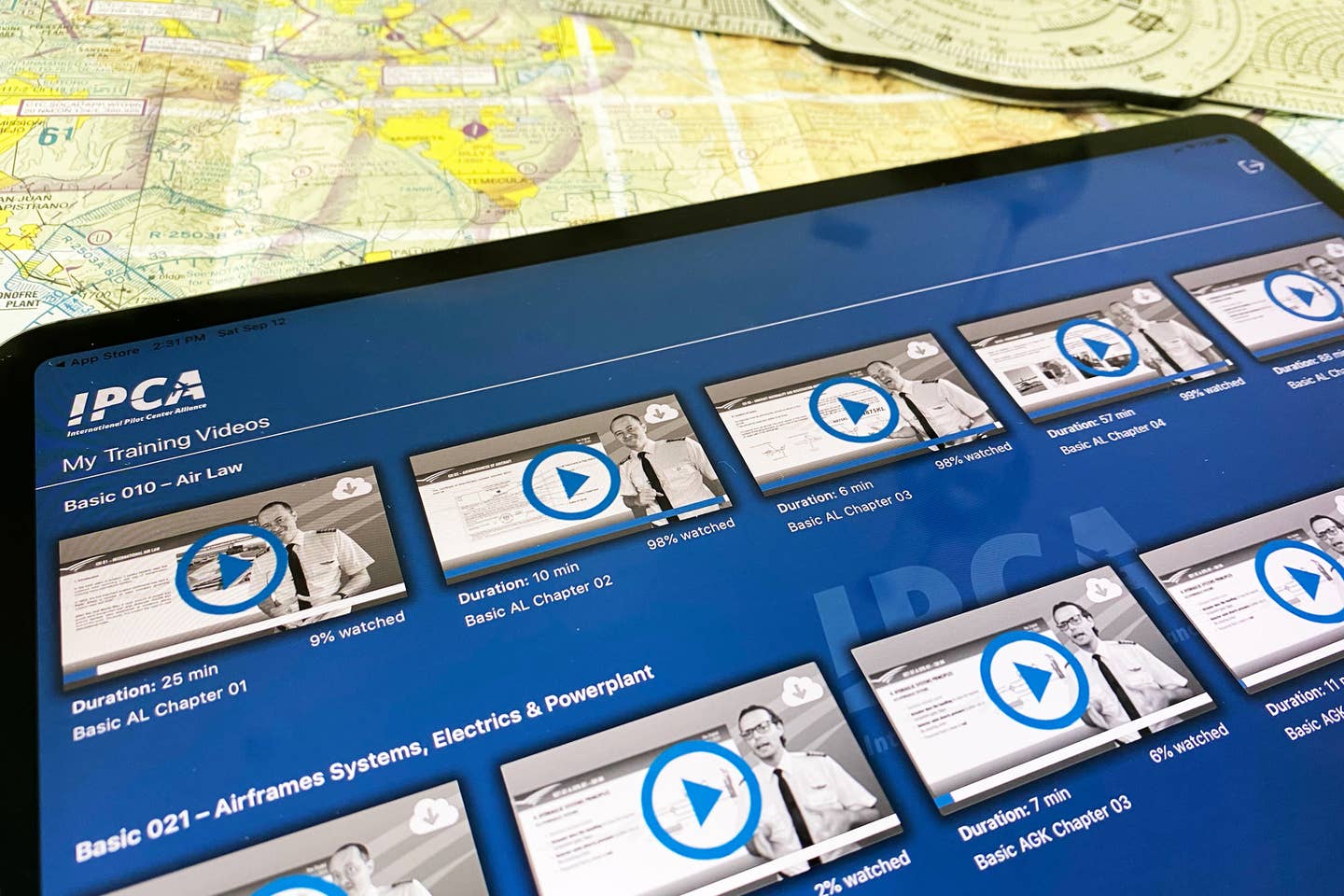
The series was inspired by the IPCA founders’ experience in training professional pilots in the US and Europe. International Pilot Center Alliance
The International Pilot Center Alliance (IPCA) has launched its new training system on September 16. According to Kay Vereeken, founder of IPCA and owner of EuroPilot Center and SoCalPilot Center, the app- and eBook-based materials fill key gaps in pilot development. The team he leads has created a FAA- and EASA-compliant theory training program to address a series of issues that Vereeken and the instructors on the team have identified over the course of their experience.
“In our 20 years of aviation experience,” says Vereeken, “we have frequently noticed that the basic concepts of aviation theory were very often misunderstood or simply not understood at all. It’s a fact that a vast majority of pilots today do not possess the knowledge to reach the highest level of learning, which is correlation. The problem our team has identified is that the core issue lies at the very basic level of training. A private pilot, for example, simply studies theory in order to tick the box, but that won’t help him to become a good decision maker later in his or her career.”
Vereeken gives an example using departure and approach stalls. “We often meet pilots that perfectly able to recall theoretical concepts of a stall on a rote level. But they usually do not possess the next level: understanding why and how an airplane stalls. In most cases, they are able to recognize and recover from a stall exercise, especially in a safe training environment (where a stall is expected). But, when we expose even the most experienced pilots in a full-motion simulator to an unseen developing stall scenario, almost every pilot pulls the yoke! It’s truly incredible and scary at the same time. In other words, the level of ‘correlation’ has never been reached. Therefore, it is no surprise that the major cause of accidents in aviation is still loss of control-inflight (LOC-I).”
He goes on to analyze the problem’s root causes: "Based upon on our years of research, the contributing factors are:
1. An insufficient basic level of theoretical knowledge exists worldwide;
2. Too much of the flight training today is “skill based;” in other words teaching a pilot how to only fly or manipulate an airplane;
3. Little or no training goes to risk assessment, especially in the early stages of the flight training. This is frequently overlooked;
4. The level of correlation has never been reached."
He says that lawmakers such as EASA and the FAA have done a good job in addressing this issue by means of mandatory and recommended upset prevention and recovery training (UPRT) for certain certificate levels. “We’re convinced this comes too late in the training path of a pilot,” says Vereeken.
The training system appeals to the need for engaging the pilot in the best ways that they learn, by combining the textual theory lessons with a video companion app for smartphones and tablets (iOS and Andriod). All IPCA partner schools are using the system as their curriculum basis. Free samples and downloads can be found on the IPCA website. They can also be accessed via the Apple App Store or on the Google Play Store.

Subscribe to Our Newsletter
Get the latest FLYING stories delivered directly to your inbox






